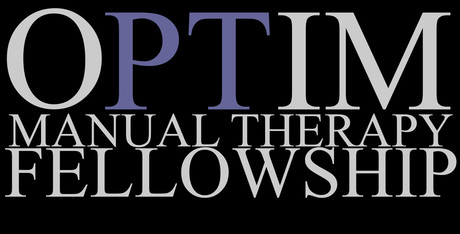- Home
- About Us
- TSPT Academy
- Online Courses
-
Resources
- Newsletter
- Business Minded Sports Physio Podcast
- Day in the Life of a Sports PT
- Residency Corner
-
Special Tests
>
-
Cervical Spine
>
- Alar Ligament Test
- Bakody's Sign
- Cervical Distraction Test
- Cervical Rotation Lateral Flexion Test
- Craniocervical Flexion Test (CCFT)
- Deep Neck Flexor Endurance Test
- Posterior-Anterior Segmental Mobility
- Segmental Mobility
- Sharp-Purser Test
- Spurling's Maneuver
- Transverse Ligament Test
- ULNT - Median
- ULNT - Radial
- ULNT - Ulnar
- Vertebral Artery Test
- Thoracic Spine >
-
Lumbar Spine/Sacroiliac Joint
>
- Active Sit-Up Test
- Alternate Gillet Test
- Crossed Straight Leg Raise Test
- Extensor Endurance Test
- FABER Test
- Fortin's Sign
- Gaenslen Test
- Gillet Test
- Gower's Sign
- Lumbar Quadrant Test
- POSH Test
- Posteroanterior Mobility
- Prone Knee Bend Test
- Prone Instability Test
- Resisted Abduction Test
- Sacral Clearing Test
- Seated Forward Flexion Test
- SIJ Compression/Distraction Test
- Slump Test
- Sphinx Test
- Spine Rotators & Multifidus Test
- Squish Test
- Standing Forward Flexion Test
- Straight Leg Raise Test
- Supine to Long Sit Test
-
Shoulder
>
- Active Compression Test
- Anterior Apprehension
- Biceps Load Test II
- Drop Arm Sign
- External Rotation Lag Sign
- Hawkins-Kennedy Impingement Sign
- Horizontal Adduction Test
- Internal Rotation Lag Sign
- Jobe Test
- Ludington's Test
- Neer Test
- Painful Arc Sign
- Pronated Load Test
- Resisted Supination External Rotation Test
- Speed's Test
- Posterior Apprehension
- Sulcus Sign
- Thoracic Outlet Tests >
- Yergason's Test
- Elbow >
- Wrist/Hand >
- Hip >
- Knee >
- Foot/Ankle >
-
Cervical Spine
>
- I want Financial Freedom
- I want Professional Growth
- I want Clinical Mastery
|
Many studies have shown the benefits of manipulation in improving muscle performance, mobility, and, of course, pain. What can be more difficult is determining the appropriate time or place for manipulation. Most manual therapy schools of thought teach their students they can manipulate specific segments and that it makes a difference. When looking at the research, support is lacking on both accounts. Studies have shown that during manipulation, cavitation can occur up to 9.5 cm above or below the "targeted" segment and that non-specific manipulation is just as effective as specific manipulation (Ross et al, 2004) (de Oliveira et al, 2013). How can it be that a non-specific manipulation is just as effective as a specific? Well the biomechanical theory of manipulation appears unlikely due to the amount of force required for collagen deformation. It seems more likely that the effects of manipulation are neurophysiological in nature. The stimulus to the nervous system may impact the tone of muscles around the various joints allowing improvements in mobility. Could that be possible? It's a theory as to why the non-specific effects can be seen, but I'm uncertain if it's possible to test. Some specific examples could be the improvements in cervical pain from thoracic manipulation (Huisman et al, 2013). While altered mechanics have been suggested, little support has been shown in research. Now, I could comment on the weaknesses of the studies shown as there are always confounding variables that cannot be controlled, but there is little benefit in focusing on that discussion, due to the difficult nature in demonstrating the mechanism of neurological changes. With all that being said, I do still believe there is benefit in trying to be specific with manipulation. I, personally and clinically, have experienced many scenarios where a general manipulation helped, but was not as helpful as targeting a specific area. There may just be a stiff area of the spine that needs the proper stimulus of increased mobility. Secondly, I believe we become much more effective with our manipulations if we try to increase our specificity. I have sat in on classes where the instructors emphasized the lack of importance in trying to be specific. The instructions were basically to wind up the patient using long levers and thrust. It is far more difficult to perform a manipulation that way, in my opinion. If you try and "target" a segment and lock them out above and below, sensing for movement at the vertebra, you typically allow the patient to relax more, which permits a more effective thrust. Again I'm not saying that we can actually manipulate that one segment, but I think we can narrow our range of force and provide more effective manipulations by allowing the patient to relax properly. -Chris References: Huisman PA1, Speksnijder CM, de Wijer A. (2013). The effect of thoracic spine manipulation on pain and disability in patients with non-specific neck pain: a systematic review. Disabil Rehabil. 2013 Sep;35(20):1677-85. de Oliveira RF1, Liebano RE, Costa Lda C, Rissato LL, Costa LO. (2013). Immediate effects of region-specific and non-region-specific spinal manipulative therapy in patients with chronic low back pain: a randomized controlled trial. Phys Ther. 2013 Jun;93(6):748-56. Ross JK1, Bereznick DE, McGill SM. (2004). Determining cavitation location during lumbar and thoracic spinal manipulation: is spinal manipulation accurate and specific? Spine (Phila Pa 1976). 2004 Jul 1;29(13):1452-7.
Like this post? Then check out the Insider Access Page for advanced content! And check out similar posts below!
0 Comments
Leave a Reply. |
Dr. Brian Schwabe's NEW Book in partner with PaleoHacks!
Learn residency-level content on our
Insider Access pages We value quality PT education & CEU's. Click the MedBridge logo below for TSPT savings!Archives
July 2019
Categories
All
|









 RSS Feed
RSS Feed